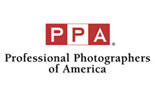Since I first began my business in 2006, I had contemplated the cute portraits with bunnies, chicks, etc. But after asking fellow experienced photographer friends and doing my own research, I decided against it for many reasons. I have been questioned a few times about it and I usually mention three things: “license to use animals”, “fear of children hurting the animals” and “fear of the animals hurting the children”.
The only animals I do allow are family pets. If you have a pet that is part of your family, I am more than happy to photograph them.
The following was written by Marcelle Raphael of Fine Art Newborns on her blog HERE. She explains perfectly a lot of additional reasons why I, Renee Giugliano of Renee Giugliano Photography WILL NOT photograph animals.
“Here’s 12 BIG REASONS why I do not offer this service:
1. The use of a live animals (mammals) in photography requires a license from the federal government’s USDA. See compliance under Licensing and Registration Under the Animal Welfare Act. Different states may have different licensing and inspection requirements as well, however, even if it is just one animal, a license from the USDA is required, regardless of State requirements.
2. A part of the permitting and licensing process includes an inspection by the federal government’s USDA offices. This is mandatory, even if your state does not require a license or permit. The inspectors may also be required to be present during the photo session. If any animal is hurt, injured or killed, the fines are serious and they can ban the photographer from actively doing business permanently.
3. Animals are often brutalized by pulling, choking, squishing, yanking and being sat upon by little clients. This is obviously no fun for the little animal.
4. Rabbits are delicate animals whose spines can snap just from being held improperly and their legs and ears can be broken or severely damaged without much effort at all. Although fowl (chicks, ducks, geese, etc) are not regulated, keep in mind the legs and wings of chicks can easily be pulled off and broken by a child who does not know how careful to be. Some rabbits become so stressed they will die of heart failure right on the spot. Having an animal injured or dying during the session does not produce the best childhood expressions to capture.
5. Animals often panic when handled by children; a frightened rabbit or chick can bite and scratch, causing lacerations, deep scratches and puncture wounds to your clients children. These can lead to infections, skin rashes and other diseases.
6. Bunnies and chicks can carry diseases such as Salmonella which can be devastating to small children. Here is a link for signs and symptoms of Salmonella.
7. Tularemia or “rabbit fever” is even more dangerous. Check the link for signs and symptoms of Tularemia.
8. PETA actively engages in looking for these activities during the year, especially on Facebook. They have successfully (and rightfully) lobbied the largest photography studios like Sears, JCPenney and Olan Mills to stop the use of live animals. PETA is on the look out for photographers who post questionable images and will call, check licensing and file complaints against the photographer. It’s as simple as calling the USDA and asking if a photographer is licensed. Individuals can also report animal cruelty on PETA’s website. Whether it’s relating to photography sessions or not. No animal deserves be to abused, neglected or mistreated, even if accidentally.
9. PPA, Professional Photographers of America, the largest association of photographers in the world, takes the stance that animals must be treated ethically and according to law. The industry widely does not accept the use of animals and is considered rather non-professional as a photographer. (Please note there are many photographers who appropriately use and photograph animals. I am specifically discussing the inappropriate, unlicensed use of animals for Easter portraiture here).
10. You can be sued for injuries, infections and damages that occur to anyone in the session. Don’t forget some people may have allergies or asthma, too! Animals can be triggers for serious allergy and asthma attacks, including anaphylaxis, which can cause death. I personally have to carry life saving Epi Pens and so does one of my children. It’s not a fun experience.
11. The shoot can become quite haphazard if your little clients are chasing bunnies and chicks. That means you are chasing your client. This, along with the frustration of the child because the animal is not cooperating, the frustration of the parents because the child is not cooperating and the frustration of the photographer because NO ONE is cooperating is not conducive to the best shots ever. Plus, editing out scratches on the face and body parts of your client is an added workload.
12. Feces! Animals can leave droppings everywhere. On your little clients, on their new Easter clothing and on your backdrops and props. EWWW!
Often, you will see beginner, hobbyist or amateur photographers in parks around Easter, trying to make an extra buck or increase their portfolio using “live” animals as bait to get appointments. VERY few professional photographers offer this option at all. If they do, it is in a very controlled environment and no one is allowed to touch the animals AND, of course, they have the proper licensing.
Family pets may be incorporated into photographic sessions without a license. But, the pet owner must be the person/people being photographed. There must be an established pet ownership relationship. For example: The photographer may not sell a pet to the client for the length of the session and then have the client sell the animal back. It must TRULY be the pet of the client. They can not be rented animals, either. Also, simply completing a setup in which the animals are not handled is not in compliance either. A license is required even without anyone handling the animal.
Please report any animal abuse to your local authorities, local humane society, PETA (report to PETA link), your State Department’s of Agriculture or the USDA. Each locality and state will have different ways of dealing with this. Usually a pretty hefty fine, often in the thousands, and jail time if the abuse is repeated or severe. The USDA can be reached at 919.855.7100 and complaints can be filed at aceast@aphis.usda.gov.
To see if your photographer is licensed according to the Animal Welfare Act, you can go to the USDA – APHIS databank.
While there are legal and health related issues for not using live animals, in general trying to capture the images of so many activities is time consuming and difficult, when it doesn’t have to be. There are plenty of very real looking props that can be purchased if you would like to incorporate an animal look into Easter sessions.
**Add-on by Renee Giugliano for state of WA: Birds (chicks, ducks, etc) are deemed as poultry (fowl) and are not required for licensing. But I still will not be offering this service unless you own the birds.











by Renee Giugliano Photography
Melanie Palik - This is why I wil stick to nature photography and shooting ( with camera ) them in the wild.
Meredith Cheek - Ok so if I just wanted to start a small pet photography business for just dogs/cats with pet owners Vincent, would I have to be licensed or have any kind of license for PETA?
Marcelle Raphael - All…I am the original author of this article please share my link. Links only. Feel free to email me with questions.
wendy b photos - I am going to post this to my business page today, with credit to you, Renee. If your photographer doesn’t care if the ducks/chicks/rabbits are injured during a session, will they care if YOU are?
Carrie Kizuka - Thank you! Very informative post. Sharing because I’ve had a number of inquiries like this myself.
Penny Watts - may I post it On my page….
Penny Watts - me too.. Thanks for the info..
Michele Holtzclaw Gunter - We have decided to not use a Bunny in our Easter Session this year due to following USDA Regulation. If you are a photographer or know one, I suggest you relay this info ! Thanks for posting Renee!!
Brandi Brook Smith - wow!!! i will keep that in mind for sure..
Imagesfromscott - I understand and glad you informed me of this
Charlotte Gosnell Keen - I feel the same way about using Rabbits in photo sessions. I never new that you had to be licensed and registered under the Animal Welfare Act to use them in photo sessions.
Scott Staley - this was very helpful thanks for the info
Jen McKen - So for all of you asking WHY I don’t use cute little fuzzy animals as a promotion for Easter Photos….this explains it better than I could!
Shana Cartwright - I was just thinking about this the other day and meant to look it up. Thanks for the information.
Shana Cartwright - I was just thinking about this the other day and meant to look it up. Thanks for the information.